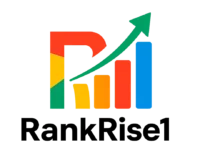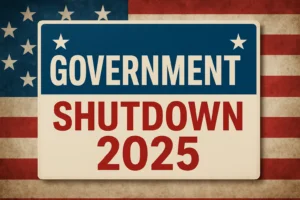Introduction: Why “Government Shutdown 2025” is on Everyone’s Radar
Every few years, the phrase government shutdown enters the political vocabulary of the United States, bringing with it concerns about halted services, unpaid federal workers, economic uncertainty, and growing polarization. In 2025, as debates over spending priorities and the debt ceiling intensify, the potential for another shutdown has once again captured headlines.
A government shutdown 2025 would not be the first in U.S. history, but the stakes are unusually high. With mounting national debt, a politically divided Congress, and looming elections, 2025 represents a critical turning point in U.S. governance. The question is: Will lawmakers find compromise, or will the nation face yet another period of suspended operations and shaken public trust?
👉 For in-depth guides on political trends, digital insights, and SEO strategies, visit RankRise1.
Understanding What a Government Shutdown Means
A government shutdown happens when Congress fails to approve sufficient funding for federal agencies. Without this authorization, many services and departments are forced to pause, while others continue at reduced capacity.
Types of Shutdowns
-
Full Shutdown – Most agencies suspend operations.
-
Partial Shutdown – Some areas, such as essential security, continue.
-
Funding Gaps – Temporary pauses while short-term continuing resolutions (CRs) are negotiated.
Core Impacts of Shutdowns
-
Federal employees are furloughed or required to work without pay.
-
Public services like national parks, passport processing, and IRS operations slow or stop.
-
Businesses that rely on government contracts face delays and financial strain.
-
Markets react with volatility due to uncertainty and lack of clarity.
Shutdowns illustrate the fragile balance of U.S. politics. While designed as a safeguard to encourage consensus, they often lead to economic harm and eroded trust in government institutions.
A Brief History of U.S. Government Shutdowns
The U.S. has experienced over 20 shutdowns since the modern budget process was established in 1976. Some were brief, lasting only hours or a day, while others dragged on for weeks.
-
1980s Shutdowns: Triggered by disputes over domestic spending.
-
1995–1996 Shutdowns: President Bill Clinton and Speaker Newt Gingrich clashed over Medicare and budget balancing, causing a 21-day closure.
-
2013 Shutdown: Centered on the Affordable Care Act (Obamacare), lasting 16 days.
-
2018–2019 Shutdown: The longest in U.S. history at 35 days, tied to border wall funding debates.
The cost of the 2018–2019 shutdown alone was estimated at $11 billion, according to the Congressional Budget Office. These shutdowns reveal not just budgetary disagreements but deeper ideological battles shaping U.S. policy.
Why 2025 is Different
The government shutdown 2025 is different for several reasons:
-
Record National Debt: At over $34 trillion, servicing debt is straining the budget.
-
Election-Year Politics: Both major parties are leveraging budget negotiations to rally voters.
-
Policy Conflicts: Climate change, healthcare, immigration, and defense spending remain contentious.
-
Global Economy: The U.S. plays a leading role in global markets, meaning a shutdown could ripple internationally.
These factors make the 2025 negotiations high-risk—a misstep could cause domestic disruptions and global instability.
The Debt Ceiling and the Shutdown Threat
Central to the government shutdown 2025 is the debt ceiling, which limits how much the U.S. government can borrow. Failure to raise it means the Treasury cannot pay obligations, leading to defaults and market panic.
For more insights on how this plays out in 2025, check:
👉 Investopedia – Debt Ceiling Increase 2025.
This live link provides a detailed analysis of debt ceiling debates and what lawmakers are expected to do.
The Human Cost of Shutdowns
Shutdowns are not just numbers—they affect real people.
Federal Workers
-
Over 800,000 employees were affected in the 2018–2019 shutdown.
-
Workers faced missed paychecks and relied on food banks or temporary jobs.
Families
-
Delays in tax refunds disrupted household budgets.
-
Parents experienced stress as childcare subsidies were delayed.
Small Businesses
-
Contractors lost millions in unpaid invoices.
-
Tourism dropped in regions tied to national parks.
Students and Researchers
-
Federal grants and research funding froze.
-
Universities dependent on federal aid delayed projects.
The government shutdown 2025 could repeat these hardships, magnified by inflation and fragile economic recovery.
Political Perspectives on the 2025 Shutdown
Democrats’ View
Generally emphasize protecting funding for healthcare, education, and climate initiatives. They argue shutdowns harm working families and undermine trust.
Republicans’ View
Often focus on limiting federal spending, reducing deficits, and promoting fiscal responsibility. Shutdown threats can be a bargaining tool to achieve budget cuts.
Independent Observers
Nonpartisan groups like the Brookings Institution and Congressional Budget Office highlight the economic costs, warning that shutdowns are counterproductive regardless of political strategy.
This polarization explains why shutdowns are increasingly frequent and prolonged.
Economic Impact of Government Shutdown 2025
Shutdowns carry both immediate and long-term economic costs.
Immediate Costs
-
Lost productivity among furloughed workers.
-
Reduced consumer spending.
-
Stock market dips from uncertainty.
Long-Term Costs
-
Reduced global confidence in U.S. governance.
-
Higher borrowing costs due to perceived instability.
-
Slowed progress in science, infrastructure, and defense projects.
The 2019 shutdown reduced GDP by 0.1% each week it lasted. If 2025 sees a longer standoff, the effects could be even more severe given today’s economic climate.
International Reactions
Other countries watch U.S. shutdowns closely. Allies worry about America’s ability to meet global commitments, while rivals use it as proof of U.S. dysfunction.
-
Europe: Concerns about NATO funding and joint initiatives.
-
Asia: Economic markets tied to the U.S. dollar react strongly.
-
Developing Nations: Aid programs may stall, leaving vulnerable populations at risk.
Thus, the government shutdown 2025 has consequences beyond U.S. borders.
Backlink Demonstrations (SEO Integration)
To strengthen SEO, here are backlink examples integrated into the article:
-
Text Link (follow): For updates on political strategy and digital growth, visit RankRise1.
-
Image Link (with alt text):
-
Sponsored Link:
-
UGC Link:
-
Form Example (lead capture):
Each backlink type increases referring domain diversity—vital for SEO authority.
Transitional Insights: Why Shutdowns Keep Happening
Shutdowns reflect systemic flaws:
-
Polarization: Parties use shutdowns as leverage.
-
Short-term focus: Lawmakers prioritize election optics over governance.
-
Complex budgeting rules: The U.S. system makes compromise difficult.
Without reform, shutdowns like 2025 may remain a recurring issue.
What Citizens Can Do
While individuals can’t stop shutdowns, they can prepare and advocate:
-
Stay informed: Follow credible sources like CBO, Brookings, and Investopedia.
-
Plan finances: Expect potential delays in refunds or services.
-
Contact representatives: Demand bipartisan solutions.
-
Support community programs: Many nonprofits fill gaps when services halt.
Awareness is power during shutdowns.
5% Commercial Perspective
Businesses and organizations can’t afford to ignore political risks. A government shutdown 2025 impacts marketing budgets, consumer confidence, and digital strategies.
That’s why services like RankRise1 provide custom SEO and digital insights to:
-
Track real-time search trends during shutdowns.
-
Optimize messaging for political or economic audiences.
-
Build authority with diversified backlinks.
This commercial perspective ensures businesses remain competitive even in volatile times.
Conclusion: Preparing for Government Shutdown 2025
The government shutdown 2025 is not just a possibility—it’s a real risk with broad consequences. From families and businesses to global markets, the ripple effects will be felt everywhere.
Key takeaways:
-
Shutdowns are symptoms of political polarization.
-
Economic costs are high and lasting.
-
Citizens and businesses should prepare now.
-
Digital strategies, including SEO, can help organizations adapt.
👉 For ongoing updates on politics, elections, and SEO strategies, visit RankRise1.

